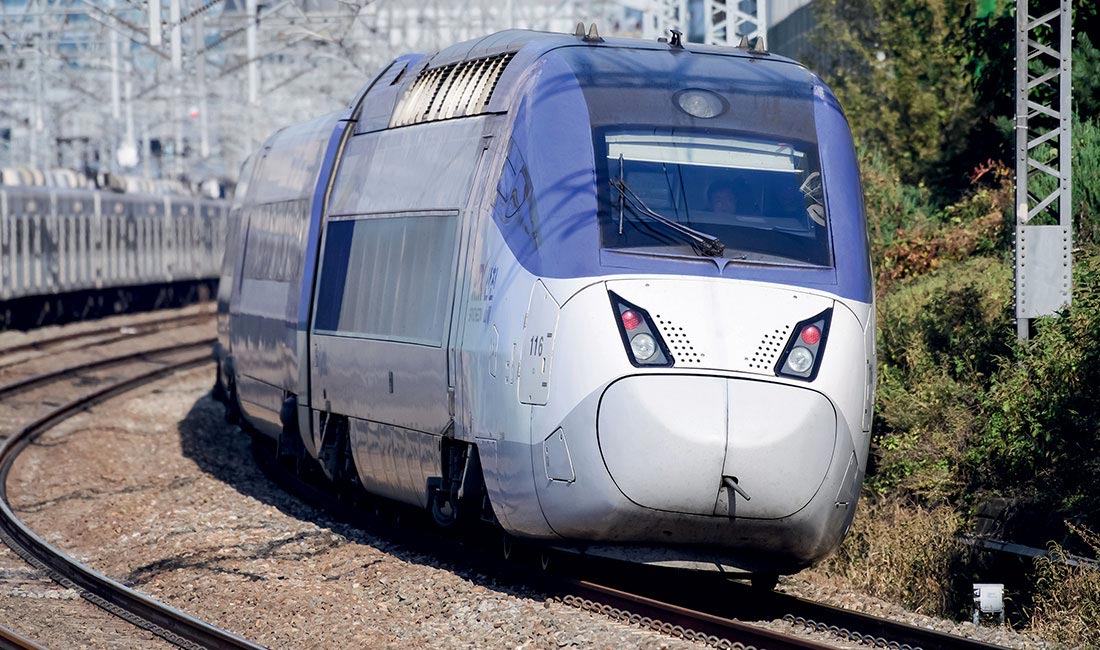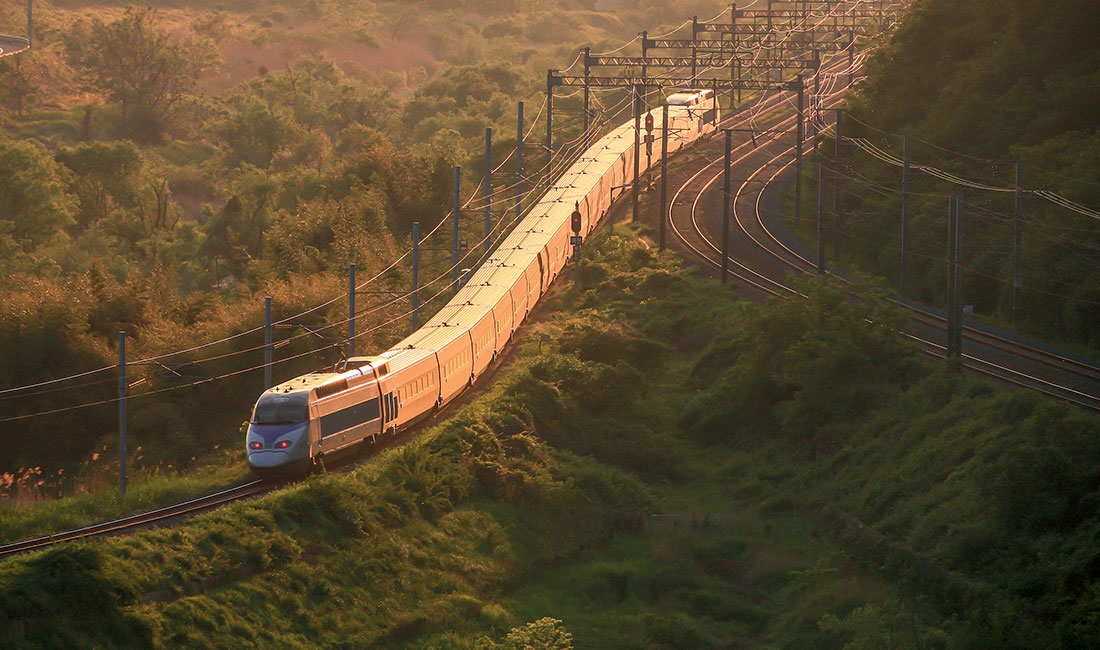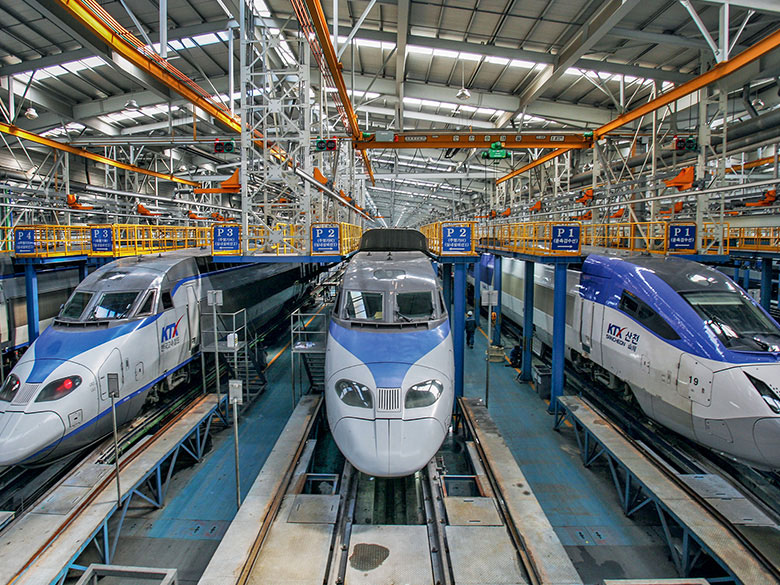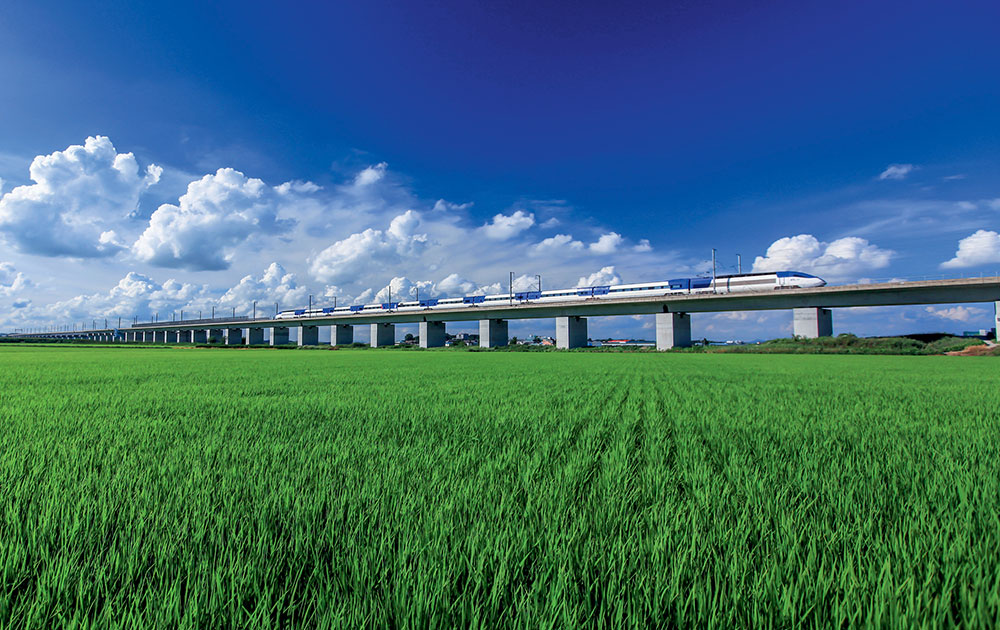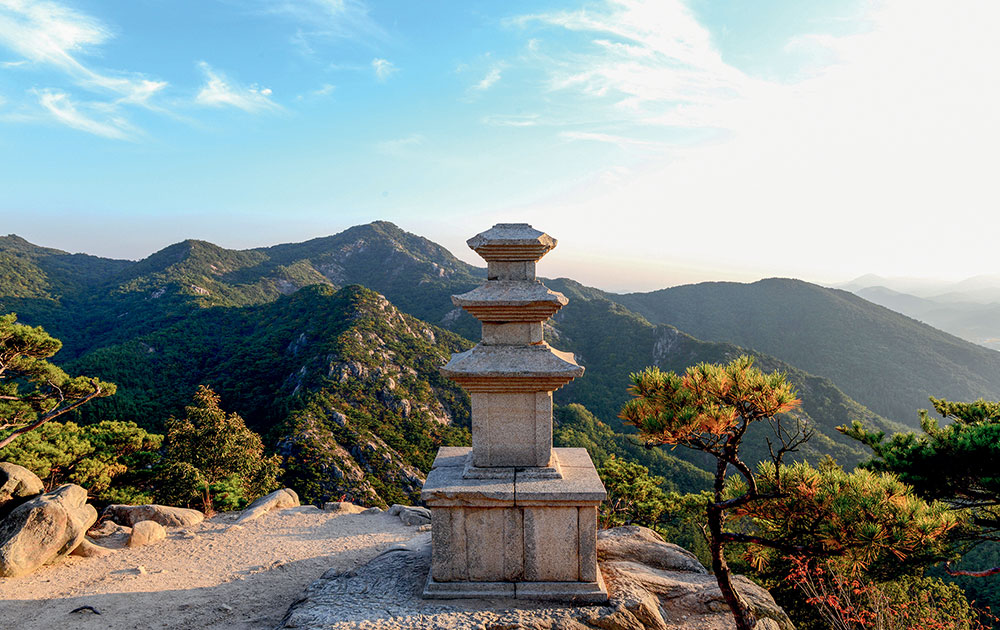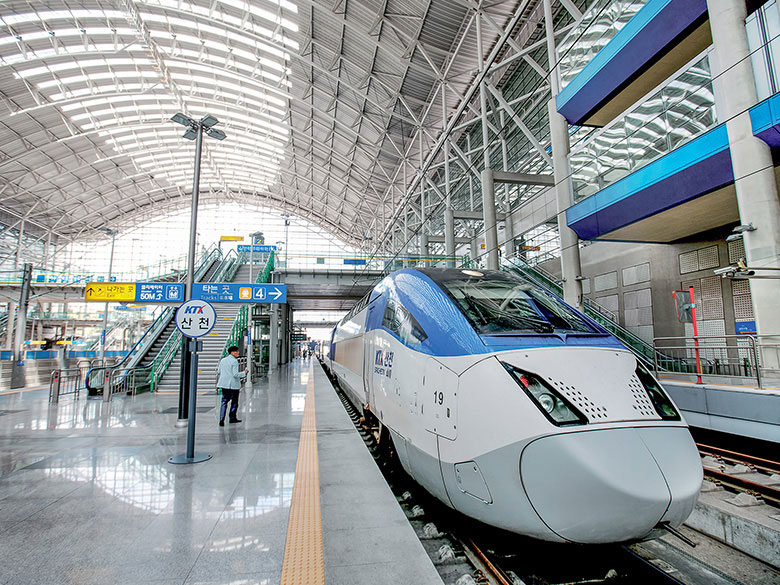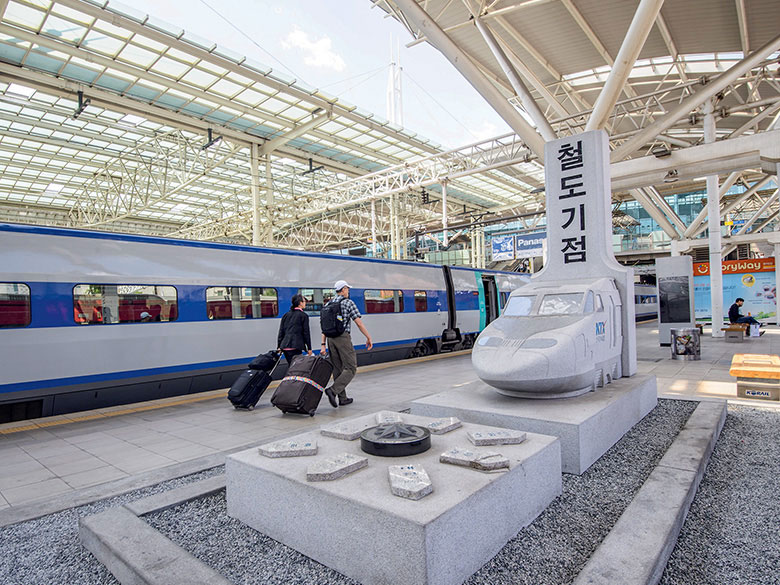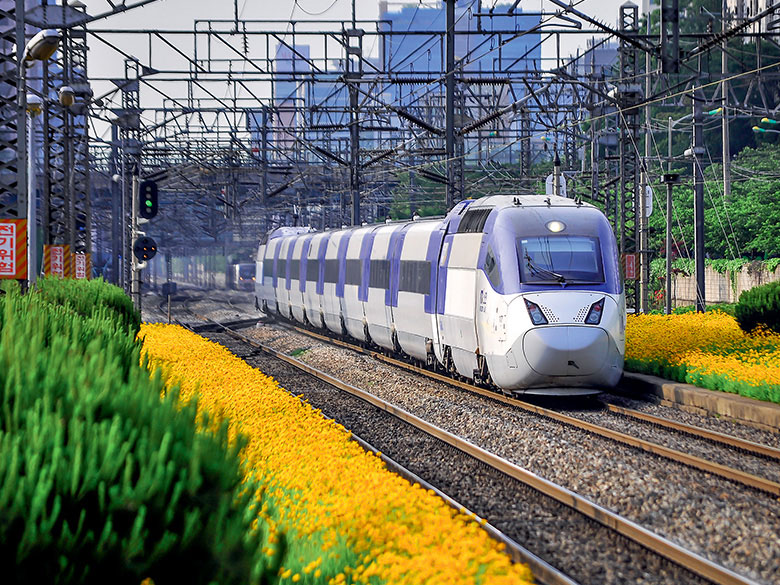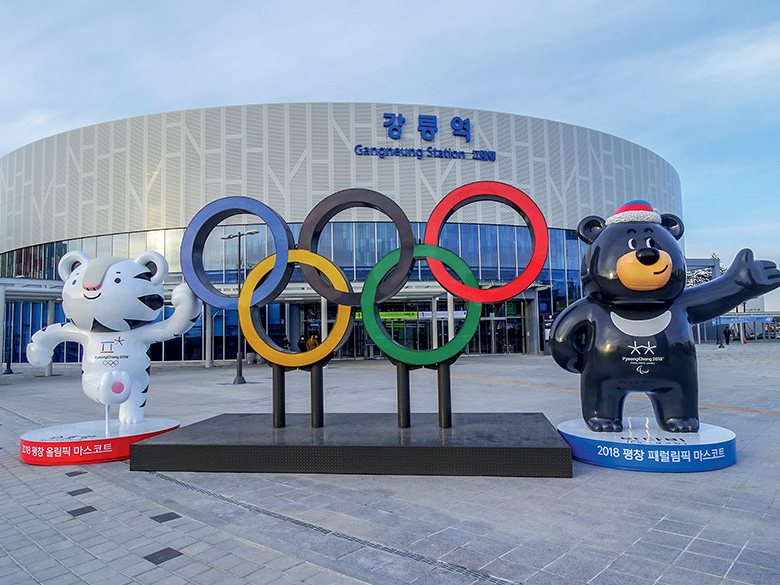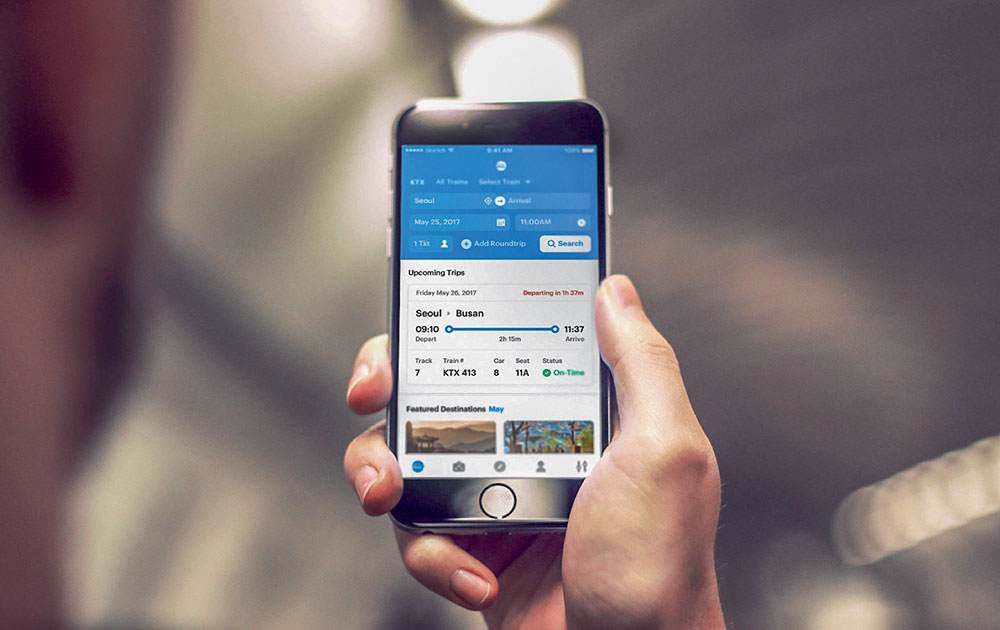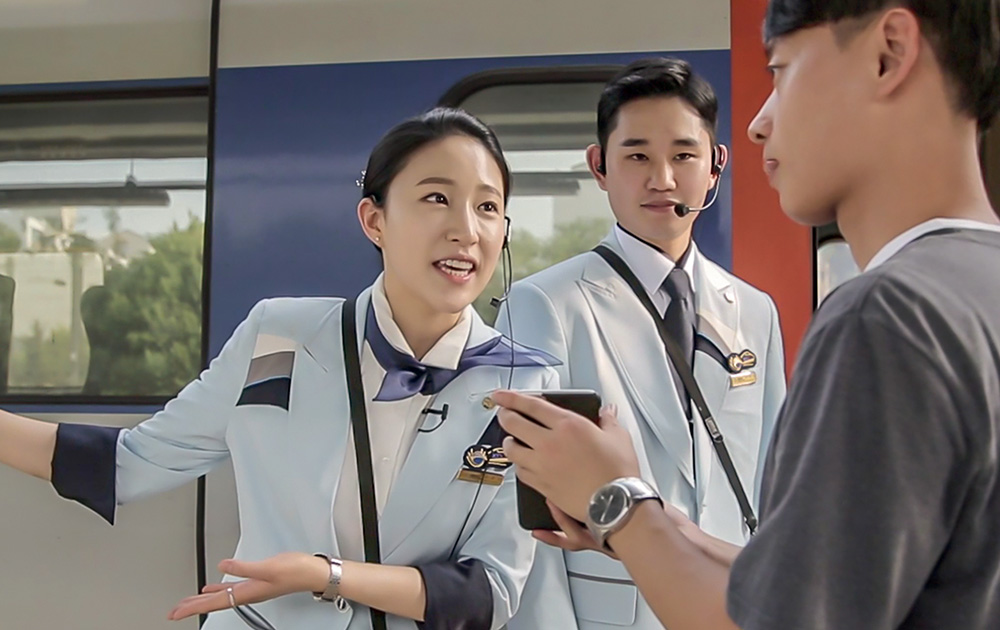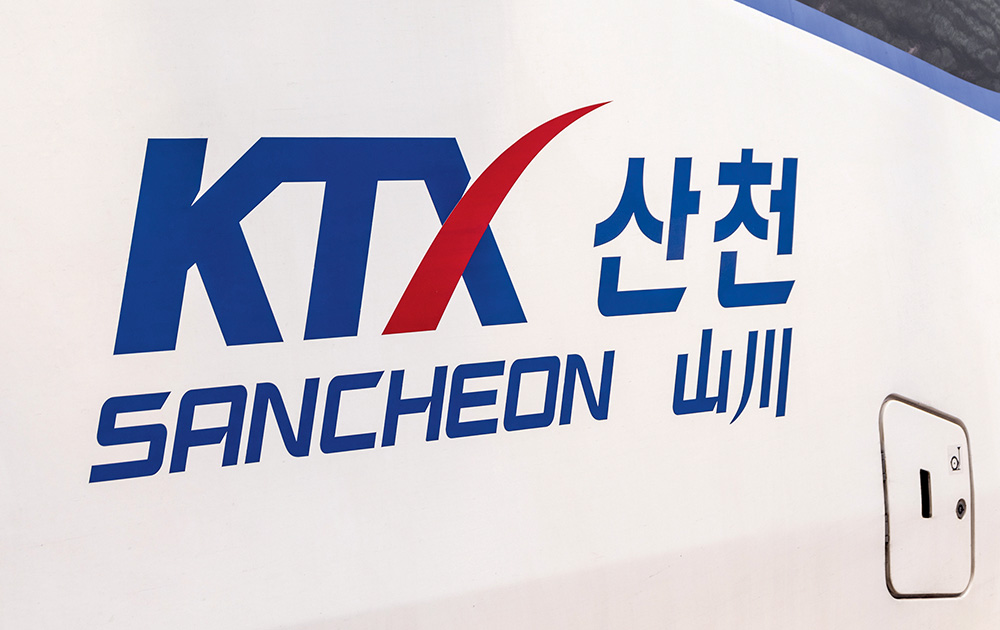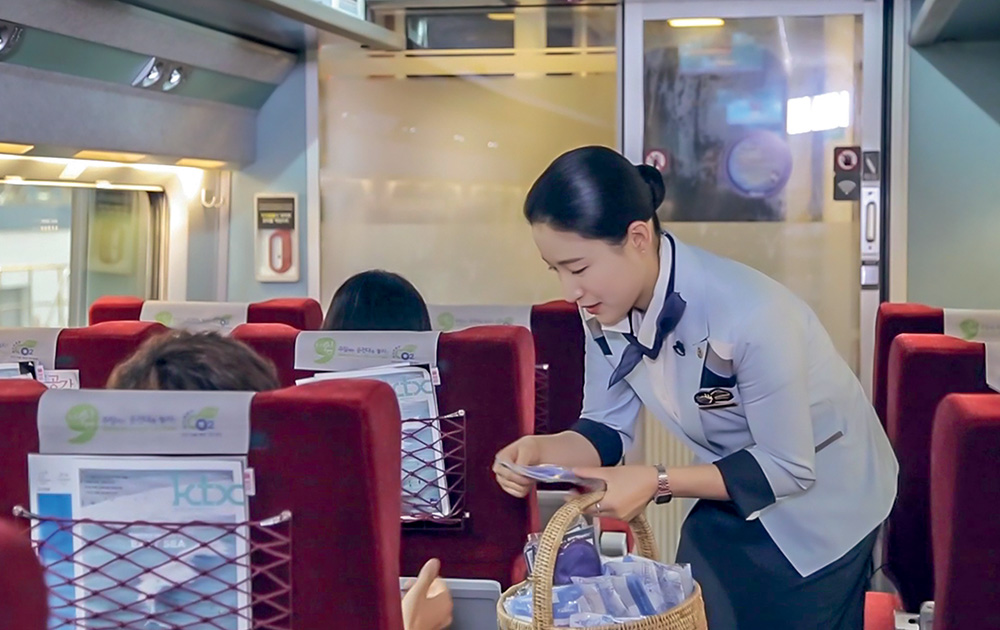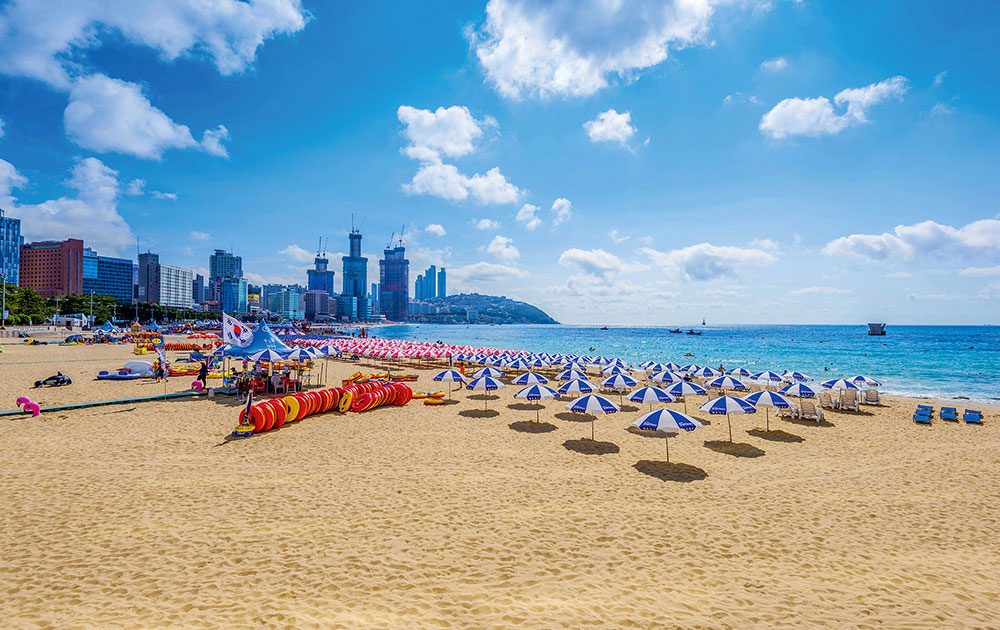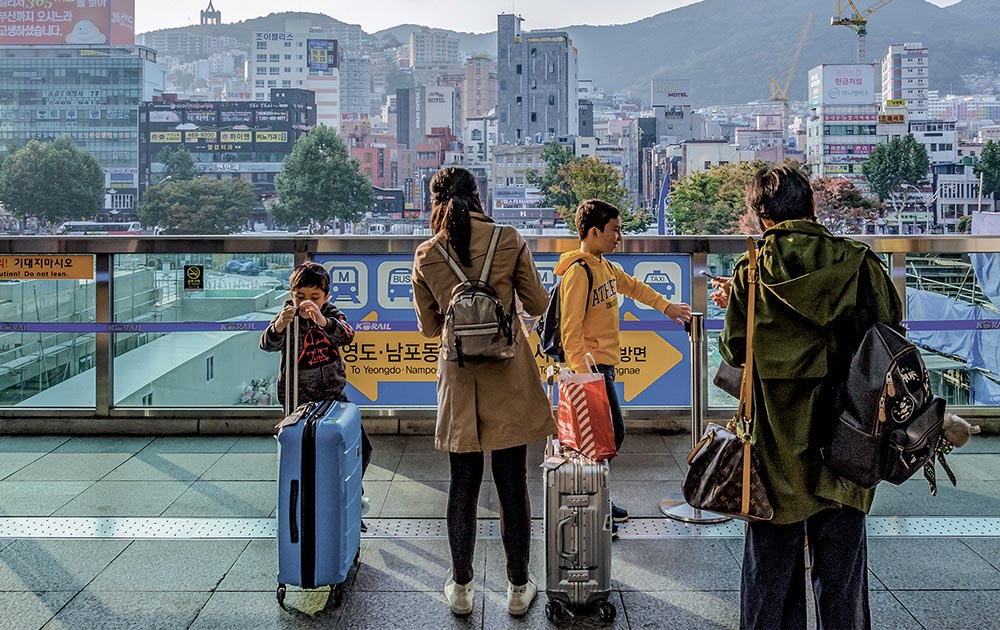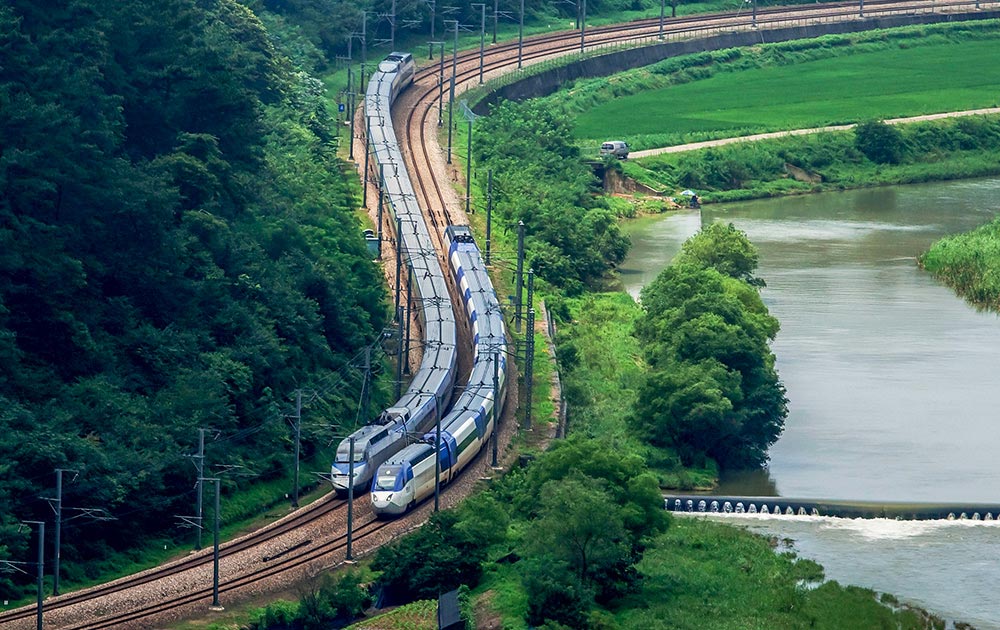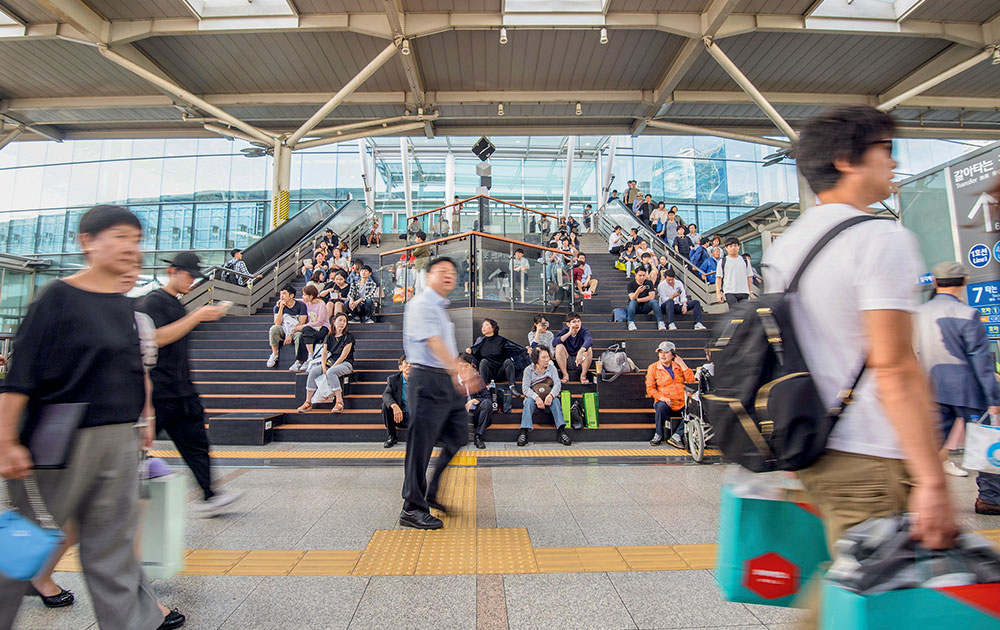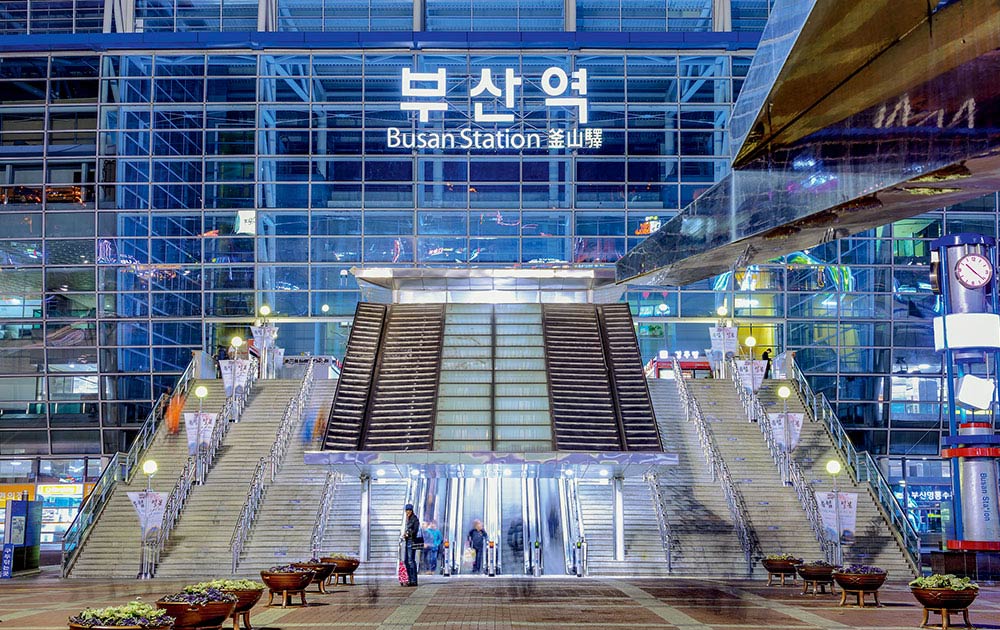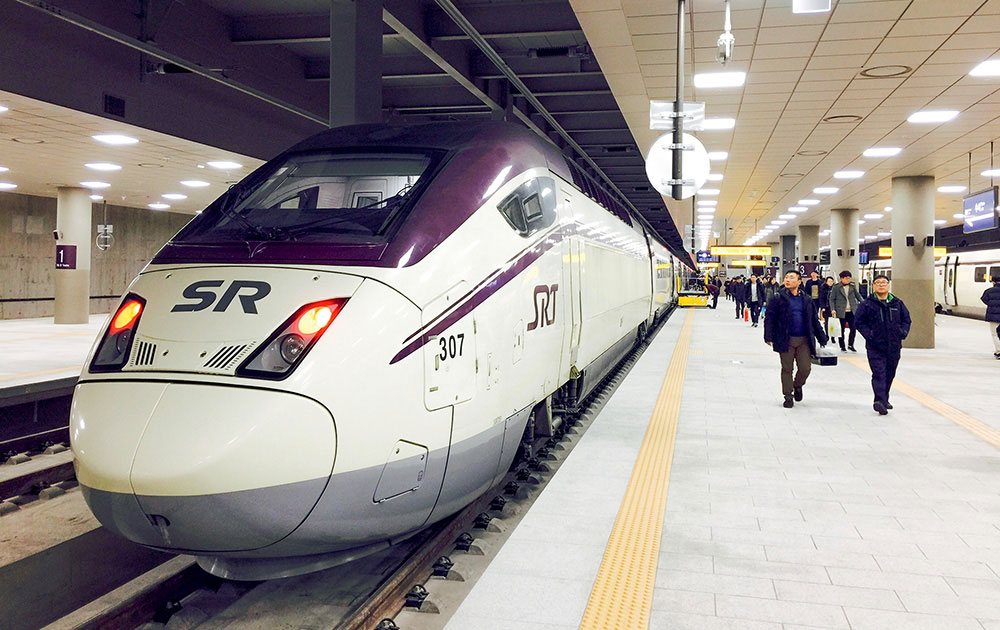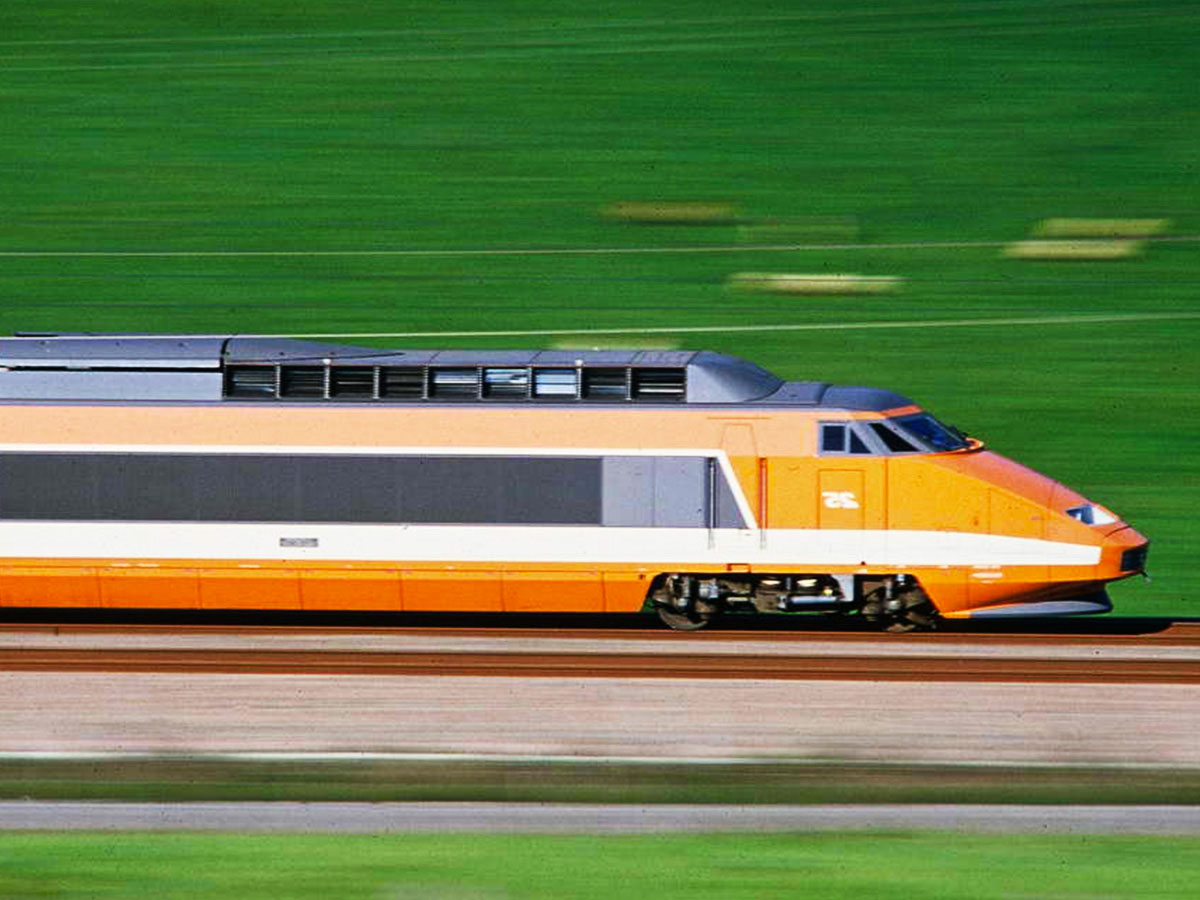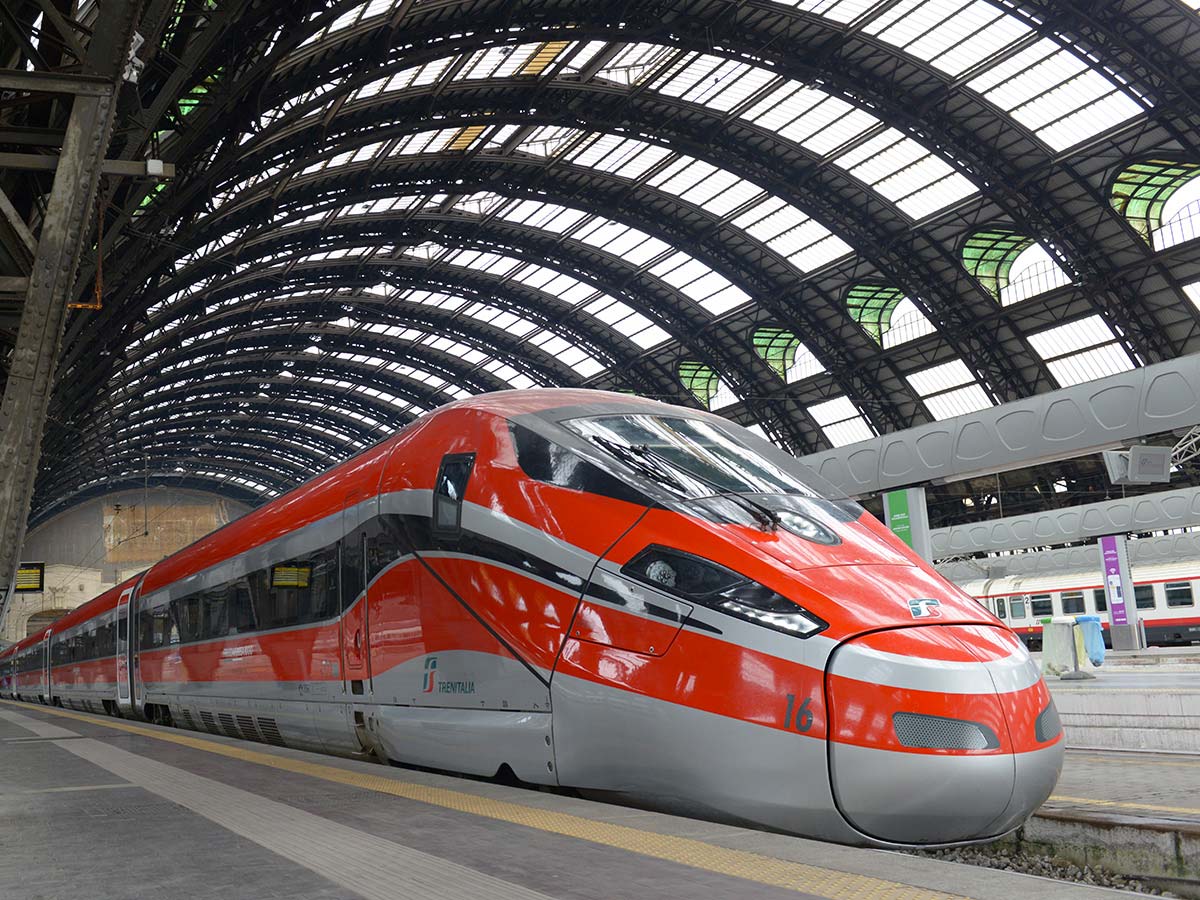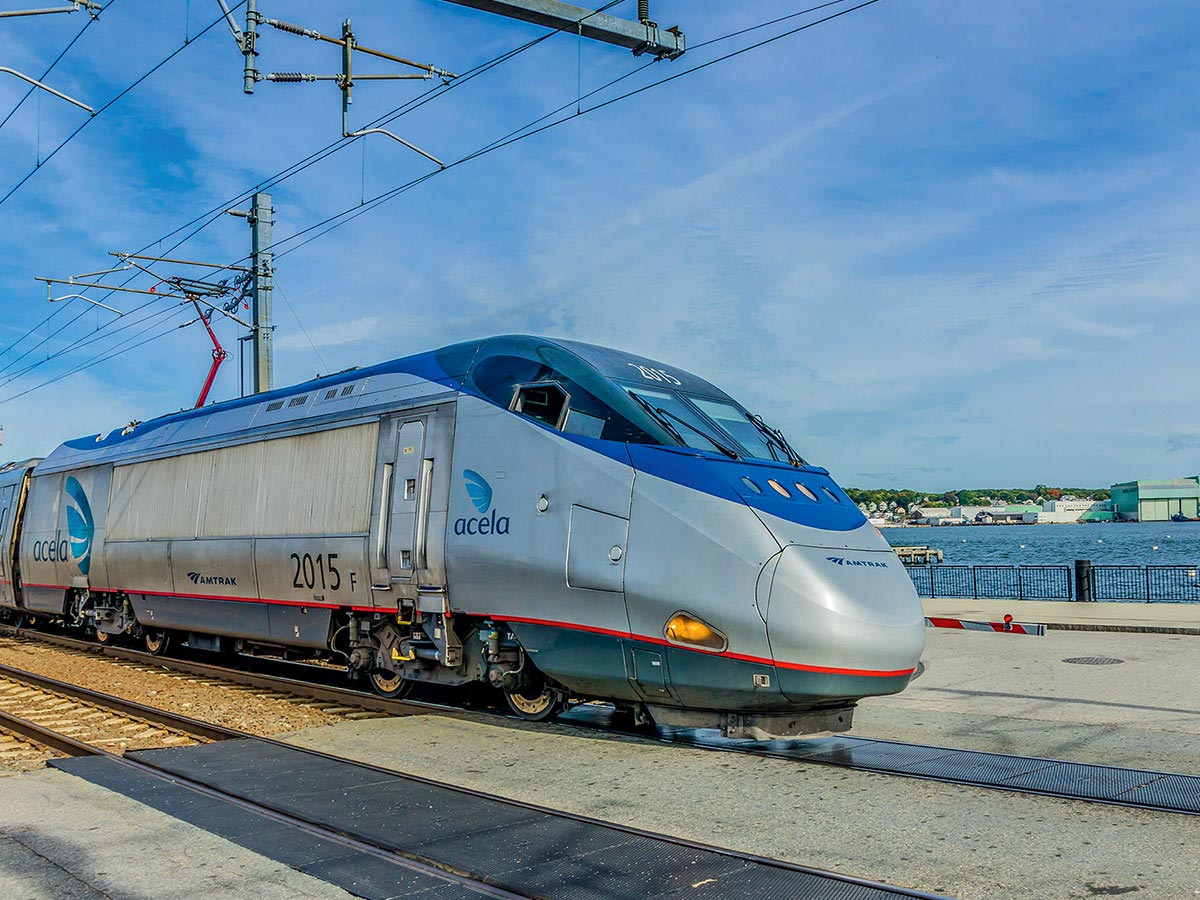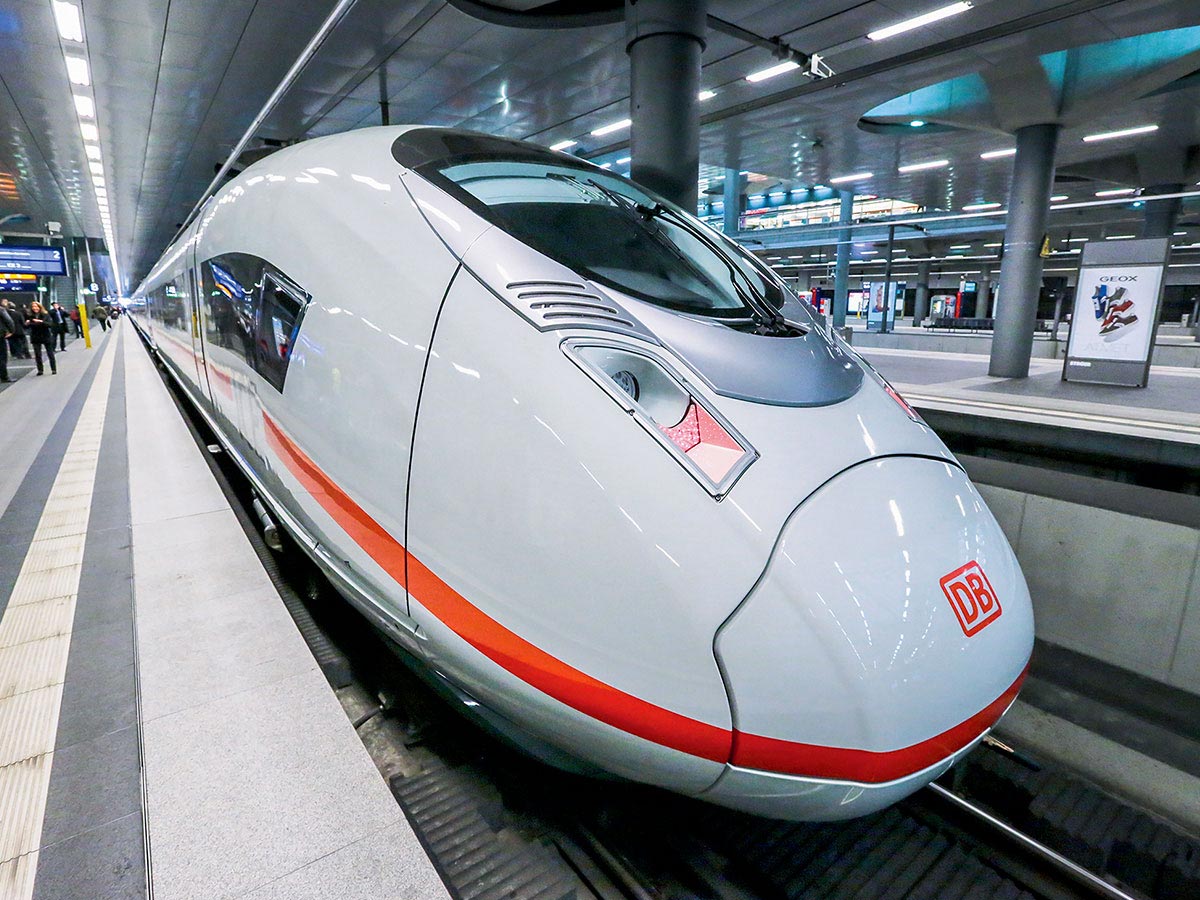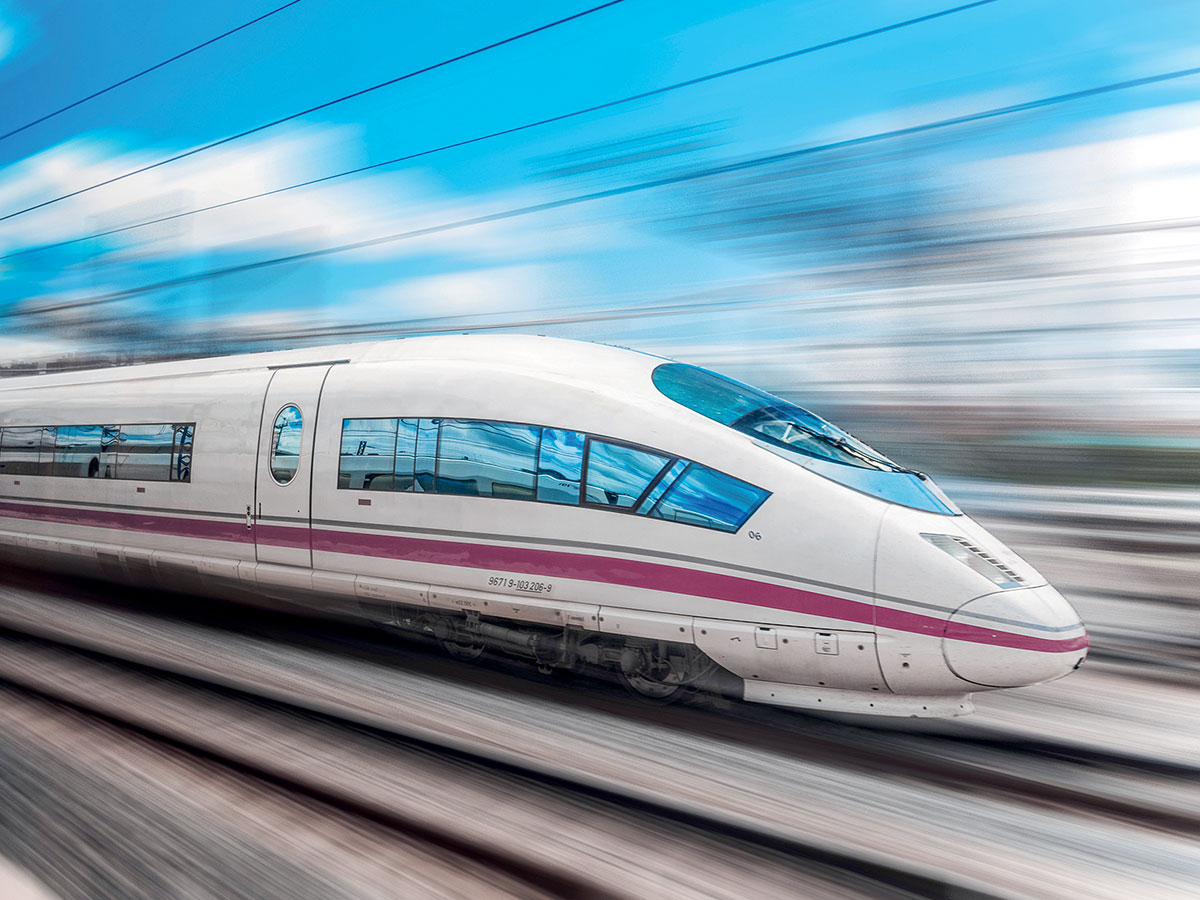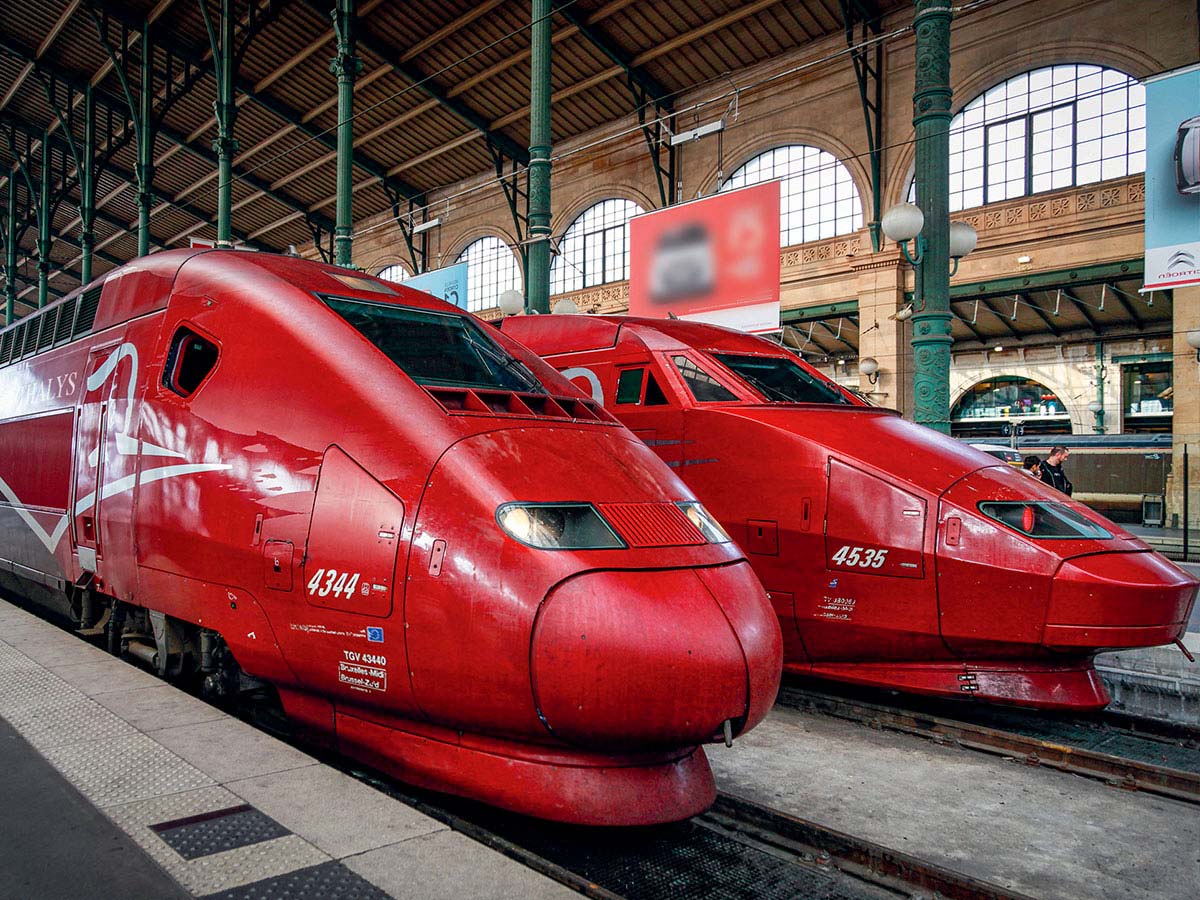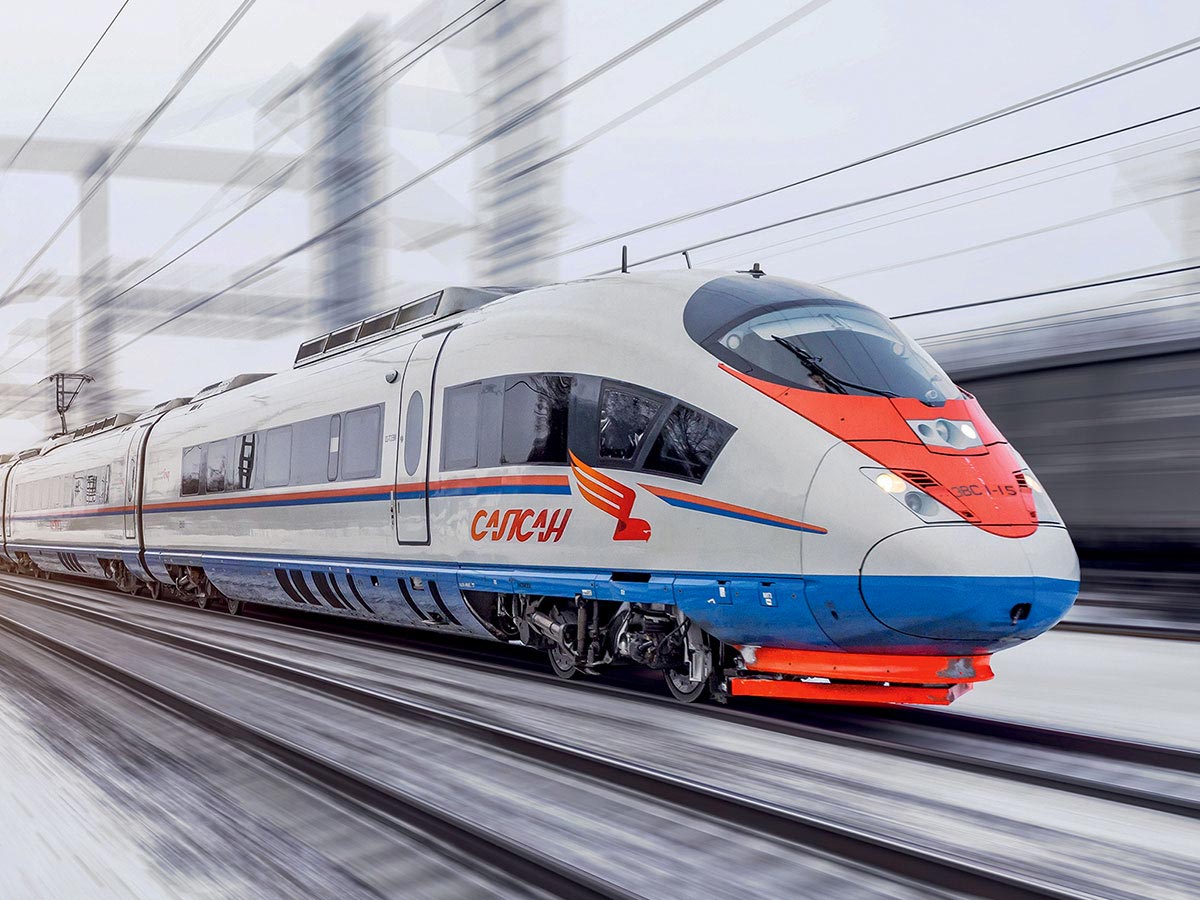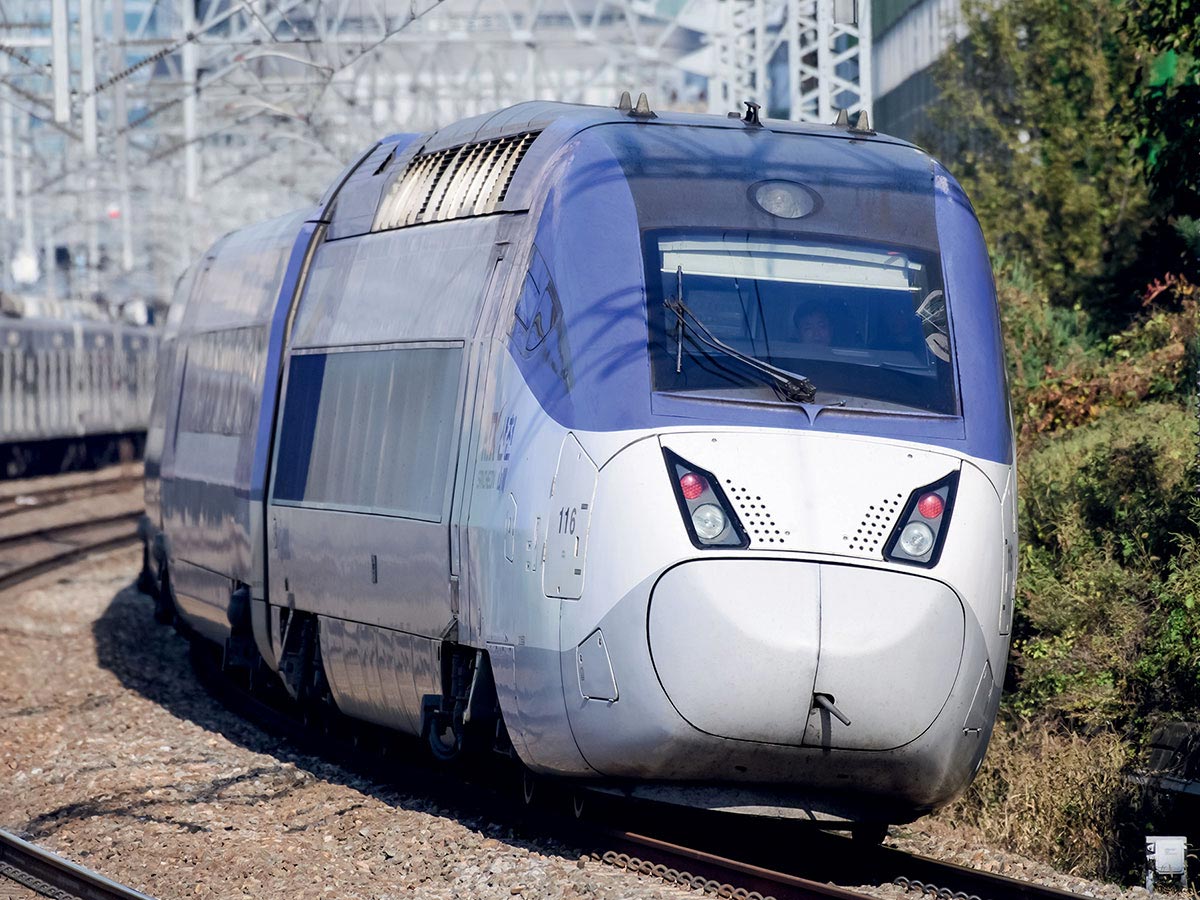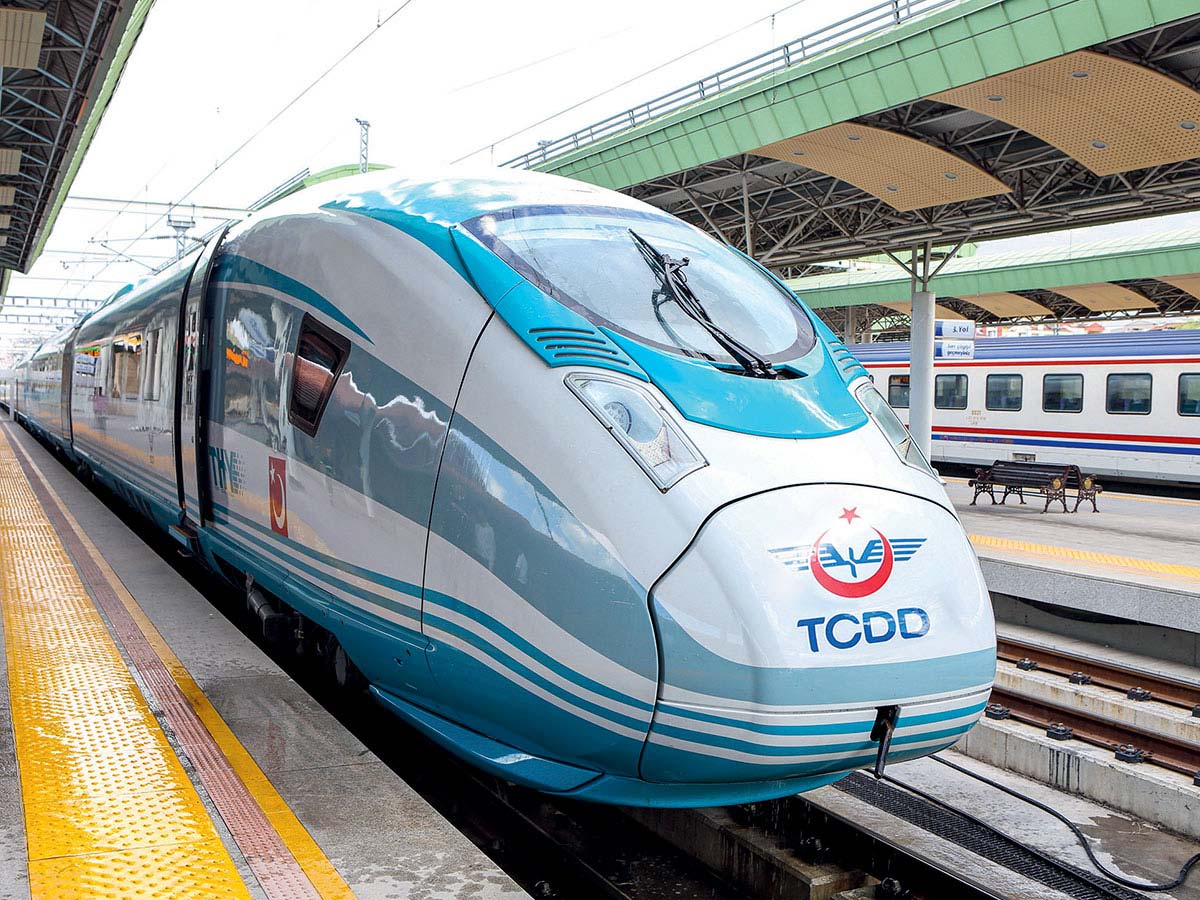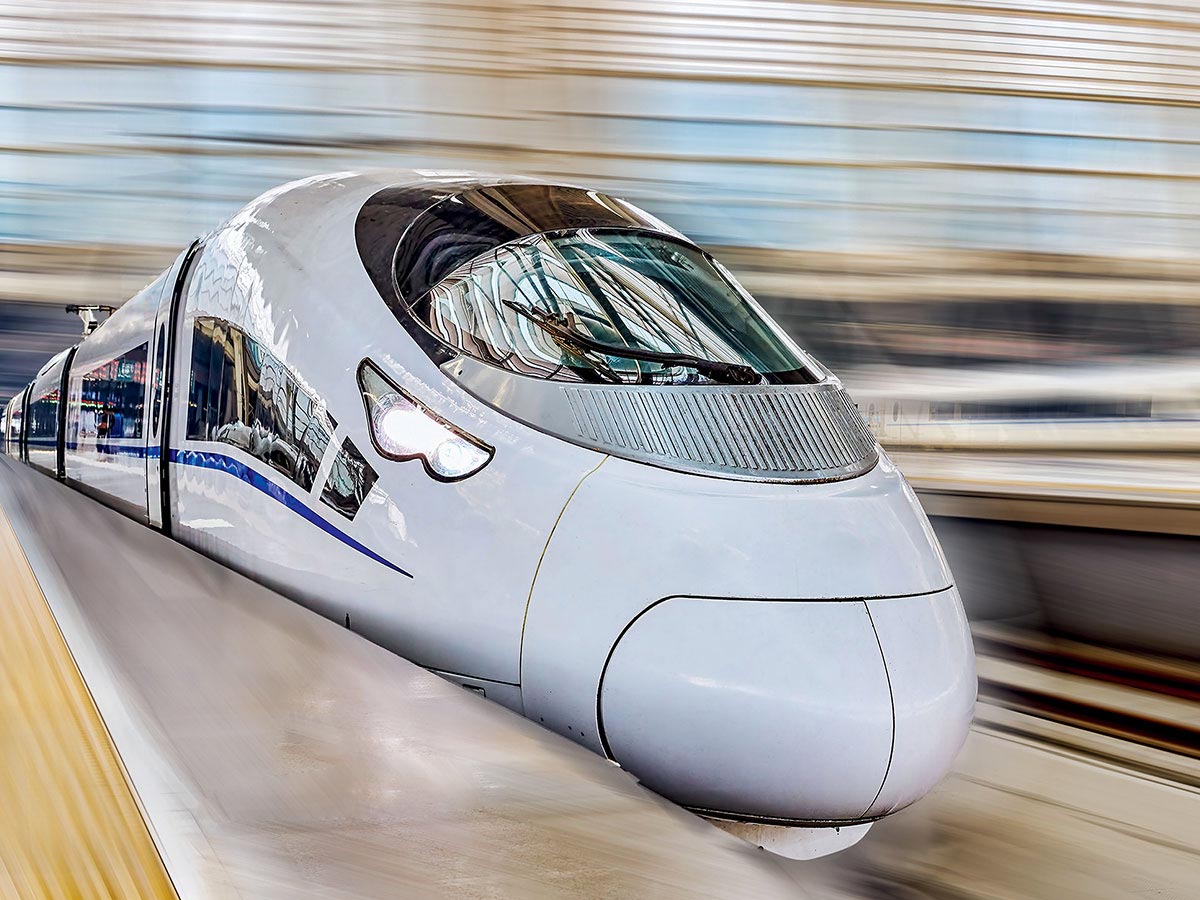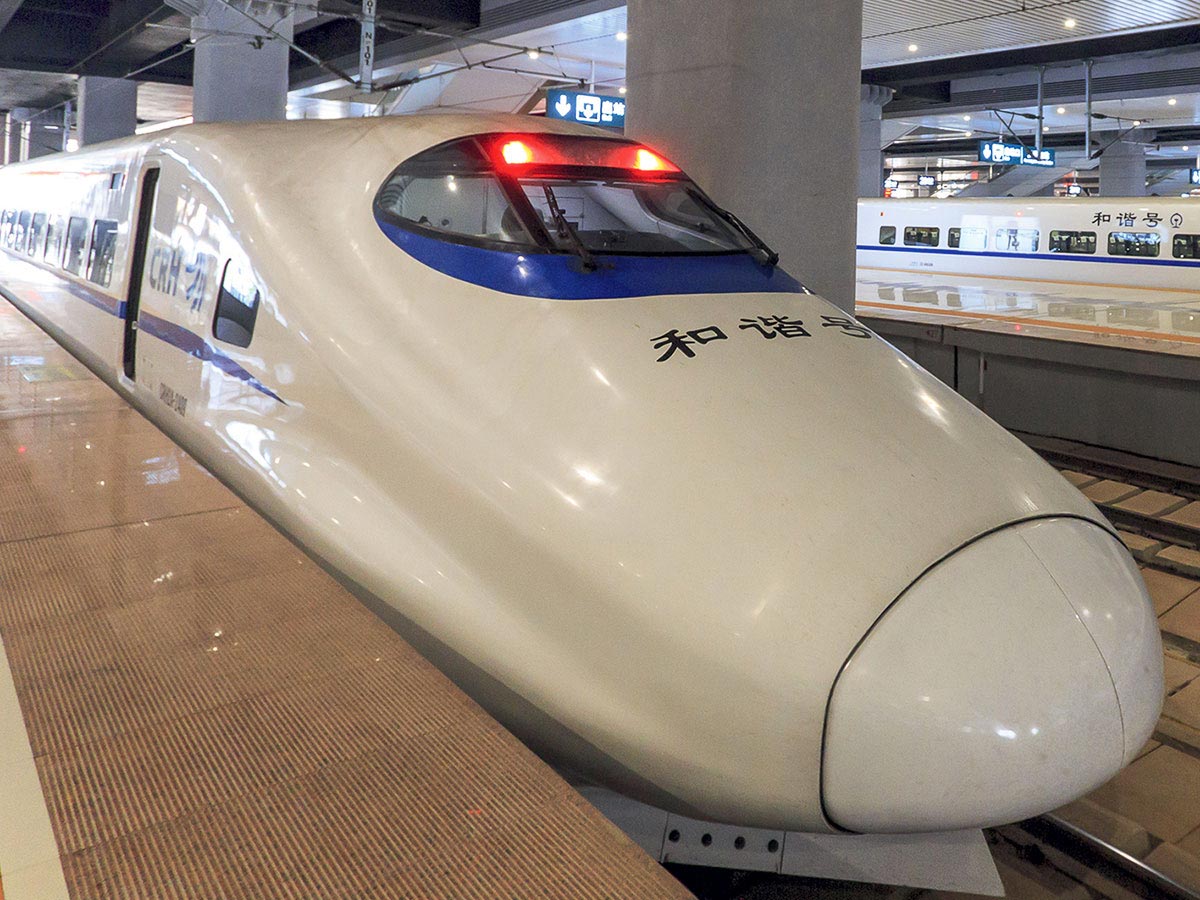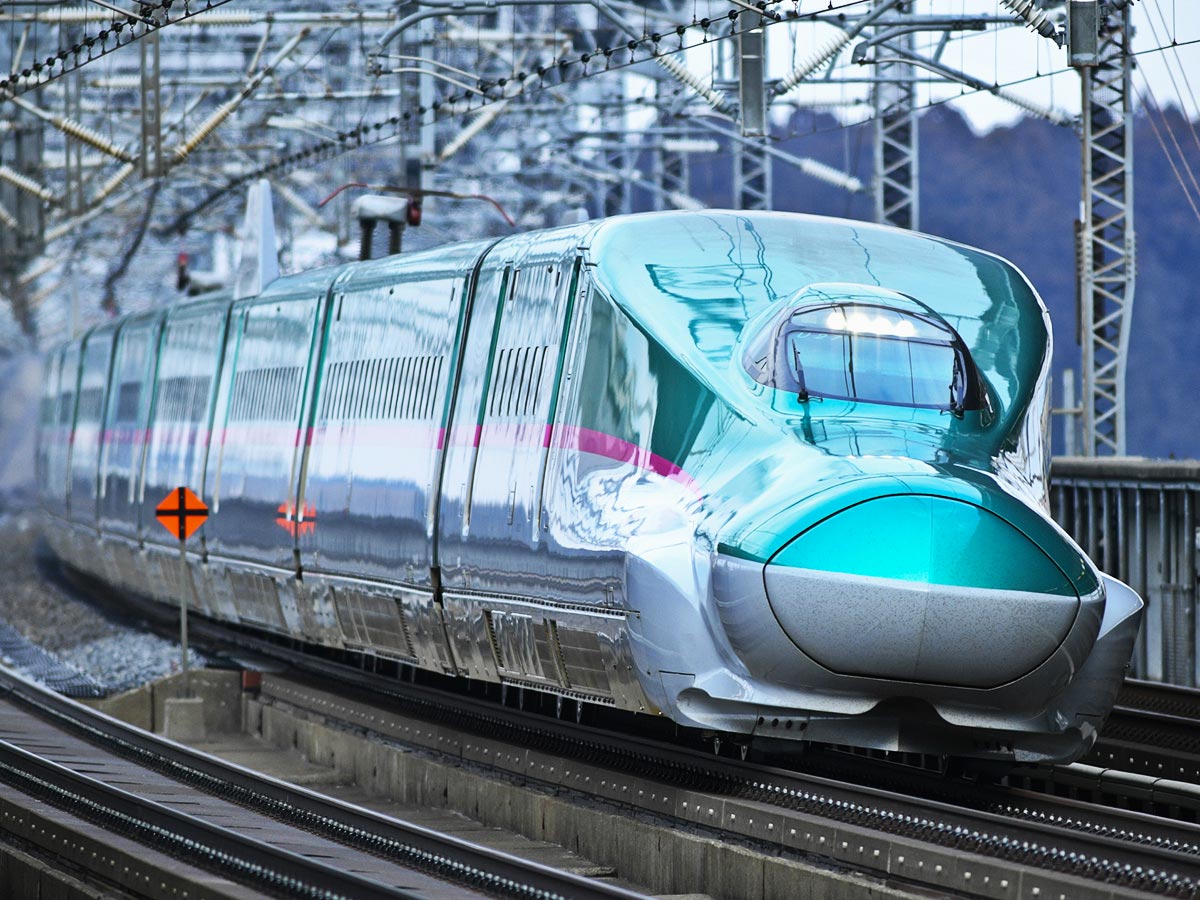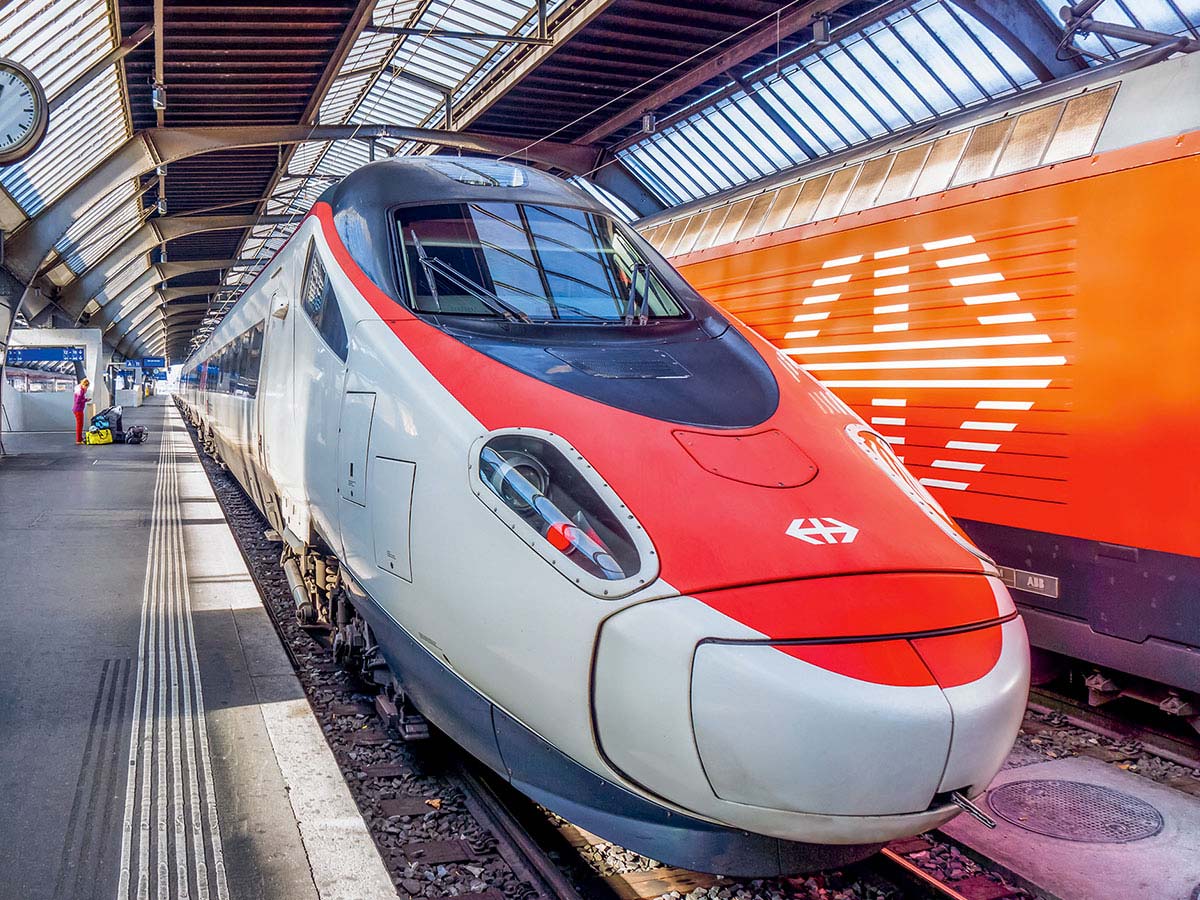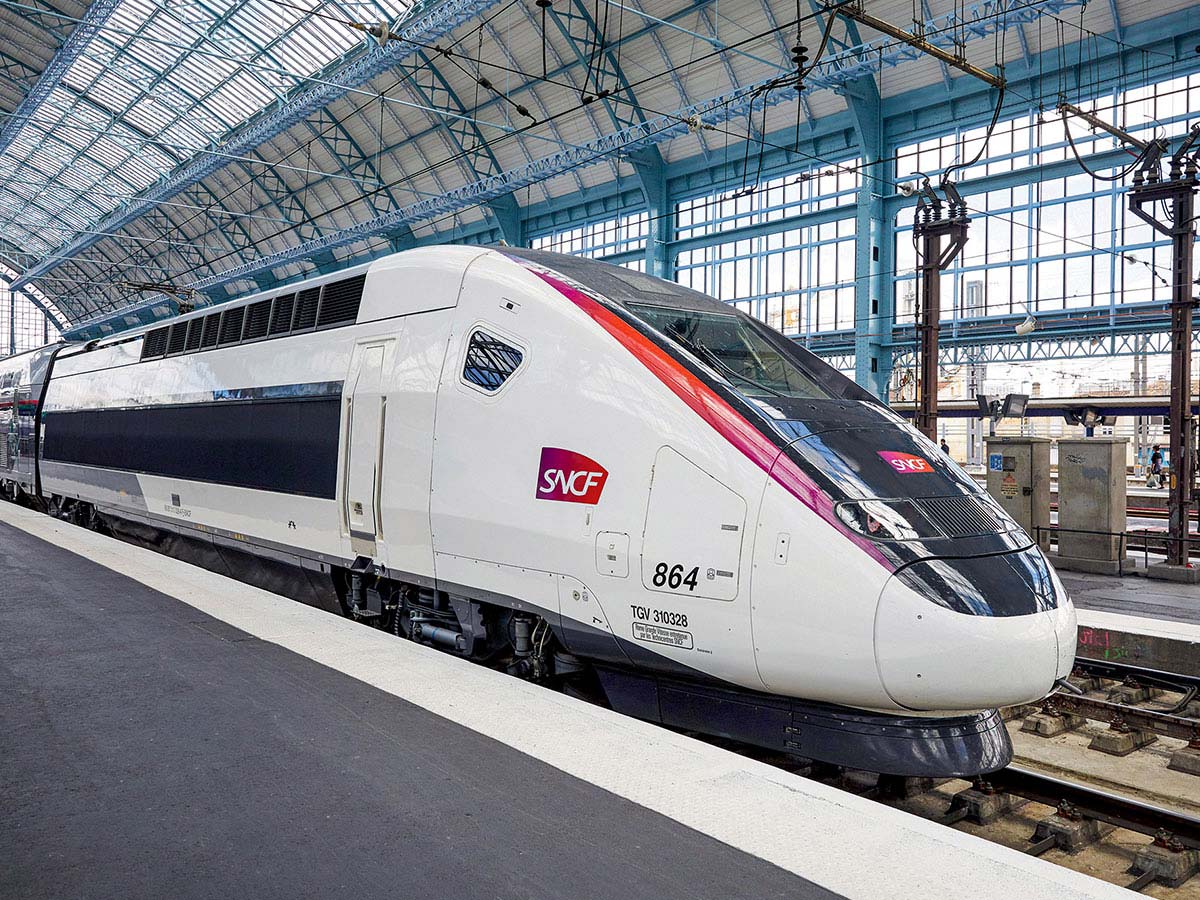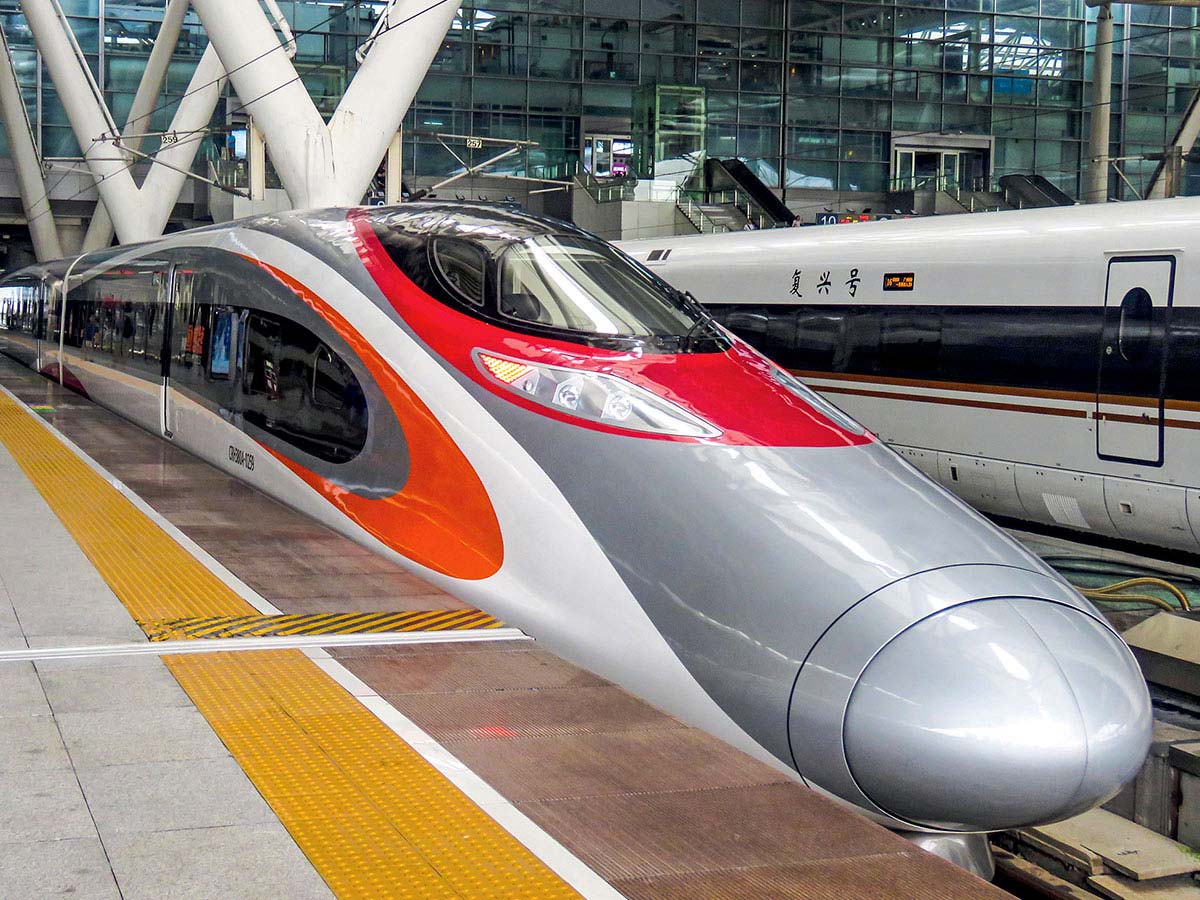SEOUL > BUSAN

2010 | South Korea
Journey
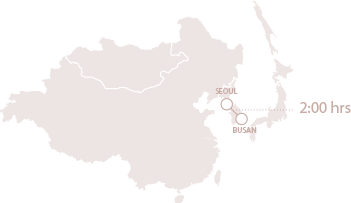
More Info
- Length in km: 412 km
- Name of the train: KTX / KTX-Sancheon/ Supreme rail
The impressive economic rise of South Korea has fascinated the world. In one generation, the country has evolved from being an agricultural economy to becoming an industrial nation, concentrating investment in innovation and high technology. The development of railway infrastructures has revolutionised connections between Seoul and the southern part of the country and eased traffic in the capital, home to one out of every two Koreans. In this country, where two thirds of the terrain are mountainous, the construction of high-speed lines is an indisputable technological achievement. The country’s many national parks and temples also impacted construction. High-speed service was first established in 2004 on a section of the Seoul-Busan line, and the entire line was completed in 2010. Thanks to KTX (Korea Train Express), and since 2016 to SRT (Supreme Railways Train), passengers can now cross the entire country in under three hours.
Leaving Seoul
Koreans love their mountains. This is not at all surprising because they seem to be everywhere, even in downtown Seoul. This gigantic metropolis of a capital is home to skyscrapers, glass towers, giant screens, and luxury shopping malls. These contemporary structures are in surprising contrast to the symbolic vestiges of the city’s glorious past: royal palaces, ancient streets, traditional markets and tea shops., A festive place with much cultural life, Seoul is hooked on “K-pop”– Korean pop music –, popular art festivals, cinema and traditional opera. Seoul Station, an ultramodern station built in 2003, stands beside the original 1925 station, now a cultural and artistic centre. The Renaissance-style façade in granite and red brick is topped by a Byzantine dome, stands in stark contrast to the newer steel and glass structure, whose arched shape is meant to symbolise the city’s vitality.
Here, the KTX high-speed trains are side by side with both the ITX-Saemaeul, the comfortable semi-express trains, and the Nuriro suburban trains. The station is also an immense shopping centre that offers a variety of boutiques, supermarkets and restaurants. Its vast halls fill up regularly with cultural events– concerts, art exhibitions, fashion shows. To appreciate an incredible view over the two stations, visitors can take the green walk. Designed for pedestrians, this hanging urban garden is landscaped with flowers, plants and trees, bringing new life into what was once no more than an obsolete motorway intersection.
A leap forward
In the 1960s, a new era opened up for the Republic of Korea, heralding a period of lasting prosperity. The country experienced an exceptional economic boom, and highway and railway infrastructures began to appear throughout the country. Twenty years on these are overcrowded, particularly along the economic axis of Seoul-Busan, which represents75% of GDP and 70% of the Korean population. Creating a new transportation system became a priority for the Korean government, and in 1989, the decision was made to invest in high-speed. Seoul-Busan was the chosen axis, and Korea enlisted French technology and experience to begin the adventure.
Intended to be operational by the end of the 1990s, the opening of the line was delayed many times, most notably by the Asian financial crisis in 1997. A first section was put into service between Seoul and Daegu in 2004, and existing lines between Daegu and Busan were electrified and modernised at that time. The entire high-speed line was completed in 2010. That same year, the Korean KTX kicked off service to the southwest of the country, linking Mokpo to the capital. In 2016, to reduce traffic congestion around Seoul, a new terminal was created at Suseo to the south-east of the capital, with a 61-kilometre high-speed link to connect to the Seoul-Busan line. Construction of this link proved to be a significant technical challenge, as 86% of this line runs underground, via a 52-kilometre tunnel.
Seoul-Busan, the journey
The KTX crosses the huge suburbs of the sprawling capital city. Gyeonggi Province, the wealthiest and most densely populated region of the country, is rich with historic temples, fortresses and royal tombs. First stop: Gwangmyeong Station, which serves the southern part of Seoul. The wave-shaped lines of the station recall those of traditional Korean houses. A vast central vault shelters the platforms and lateral galleries. The line emerges from tunnels to reveal views of wooded hills, terraced valleys, countryside brimming with bucolic charm and traditional villages. The train passes through Suwon - known for its impressive citadel and strawberries in the springtime – before entering the province of Chungcheong, home to many remarkable historic sites.
The train stops at Cheonan-Asan, the monumental station built between the two cities of its name. This area is home to one of the country’s largest museums, the Independence Hall of Korea, a memorial dedicated to the South Korean resistance. Next is Daejeon, the “city of science” established in a grassy plain surrounded by lakes and mountains. The city streets are lined with cherry trees, and when they blossom in springtime, the view is magical. Chungcheong Province is brimming with hot springs. To the south is the land of ginseng, beloved by all Koreans. From Daejeon, the train moves on toward the south-east of the peninsula, passing several national parks to the west. The line travels through Daegu, the third-largest city of country, located in a rich growing area known primarily for its apple varieties. From the edge of Daegu spreads Palgongsan Park, whose wooded hills are studded with sanctuaries. The KTX then follows the valley hollowed out by the Namcheon River, stopping at Sin Gyeongju, the high-speed rail station on the outskirts of Gyeongju. The city is a veritable outdoor museum, possessing one of the most fabulous archaeological sites in the world. Everywhere are royal tombs, pagodas, fortresses and memorials, each a vestige of the ancient kingdom of Silla, which unified the peninsula between the 1st and 5th centuries. The train continues along its route, and soon the white sandy beaches of the east coast come into view. Busan is the end of the line. Passengers are greeted with the sound of fog horns, announcing the great port city of the south.
A complex construction
It took twelve years to build the Seoul-Busan line. With one major obstacle: the natural environment of Korea. Two-thirds of the route are mountainous, thus in order to create the shortest route, it was necessary to tame a difficult topography. Though few of the peaks reach an altitude above 1,000 metres, the mountain ranges imposed very complex engineering works as well as construction of many costly tunnels – 46% of the entire line! – and viaducts. State of the art technologies were implemented to reduce train noise and limit the pressure of side winds and vibrations. Prefabricated concrete bridges were built in three days. Tracks were laid on slabs rather than on a bed of ballast. Though more expensive in construction terms, the former requires no maintenance, and offers the advantage of avoiding transitions from flexible ballasted track to slab track.
Another challenge: the protests of local inhabitants, unwilling to allow the route to pass near their homes or sensitive wildlife areas. Lively debates took place in the municipalities over the choice of new stations. The marvellous archaeological site of Gyeongju was the subject of nearly three years of heated discussion, resulting in agreement to avoid the city entirely, and a new peripheral station was created. The route’s path was later further modified, after the discovery of old mine shafts near one of the tunnels. Works carried out at Gwangmyeong Station, 22 kilometres south of Seoul’s central station, were particularly difficult due to complete, as the soil’s high moisture content required drying operations during the construction phase.
A train for the Olympics
In December 2017, two months before the opening of the winter Olympic Games, a new high-speed train – sporting the white tiger and brown bear, the Games’ mascots - was inaugurated. This new 251-kilometre rail link between the international airport at Incheon – southeast of Seoul – and Jinbu provided access to the slopes of Pyeongchang, 80 minutes from the capital, then on to Gangneung, on the east coast, to watch events on ice. This line is operated by KORAIL using Korea Train Express (KTX).
Korail
The Korea Railroad Corporation, or KORAIL, manages the KTX as well as the Seoul subway, suburban and freight trains. The KTX brand is the historic high-speed rail transport operator in Korea. KORAIL now shares the rails with a new operator, Supreme Railways, a subsidiary of KORAIL.
The KTX model
There are currently two models running on the high-speed network: the KTX and the KTXII – also known as the KTX Sancheon, which means “torrent” as well as “sancheoneo”, a species of cherry salmon indigenous to Korea. The KTX is designed to offer the least possible air resistance, with a bottleneck nose like a dolphin. Any resemblance to the French TGV is not incidental, as South Korea chose to partner with Alstom to design the first trains. In exchange, the French company was required to exchange knowledge and technology. Thus, the first twelve trains were manufactured in France, and an additional thirty-four were gradually shipped, relocated and built by national companies in Korea. The KTX circulates on the Seoul-Busan and Seoul-Mokpo lines at a speed of 300 km/hr.
The nose of the new KTXII has been slightly modified, and its aerodynamic profile is often compared to a masu salmon. Taking advantage of Alstom’s know-how, the KTXII was designed entirely in Korea by Hyundai Rotem, a company specialising in rolling rail stock. Built in aluminium rather than steel, it is both light and robust. Pressure wave resistance in tunnels has been improved. New pivoting seats allow passengers to choose whether or not to face the direction of travel, and more space is offered between seats. Based on the French system, the first KTX trains and KTX-Sancheon train offers two classes of service, 1st and 2ndclass. Impeccable service is on offer by agents dressed in elegant uniforms of suit and scarf for women, tie for men: navy in winter, pale blue in summer. Reservations are easily booked by mobile phone, and the timesaving Korail Talk app provides all related travel information. The most well-organised passengers can even request wake-up service. KTX, the premier brand in the country, boasts an excellent reputation for punctuality and safety.
→ High-speed KTX-Sancheon in Seoul.
Arriving at Busan
The name of this city is known to moviegoers around the world since the 2016 release of Train to Busan, by South Korean director Sang-Ho Yeon. The plot is terrifying. Zombies have boarded the KTX, terrorising passengers, and each station stop is an apocalyptic nightmare. Busan is the end of the line, and, spared by the zombies, symbolises the promised land. A wink to this film-loving city, which is host each year to a famous international film festival. Surrounded by mountains, Busan is the second-largest city of Korea as well as the country’s most significant port, receiving tens of thousands of containers daily. Known for the kindness of its people, the city is home to ultramodern installations and a maze-like highway system, but also to neighbourhoods of low houses and quiet streets. The Jagalchi fish market offers meals at all hours, and the wide beaches east of the city beckon vacationers from all parts of the country. To the south, the rail station and ferry terminal are very busy. Busan Station, erected in 1908, underwent a major expansion in 2004 to accommodate the KTX.
→ Southeast of Busan, this 7-kilometre bridge spans Gwangalli Bay.
Social and economic effects
Linking the two greatest cities of Korea in just two hours has relieved the overwhelming congestion on both highways and the railway. In the past, during holiday periods, it was at times necessary to book train tickets up to a year in advance. The high-speed line has heralded a new way of life for Koreans. Business day-trips have become common place, now representing 40% of traffic on this line, and a new culture of itinerant tourism abounds. Many Seoul residents make weekend getaways from the capital. One popular destination is Daejon, where visitors can hike in the mountains and enjoy local hot springs. High-speed also impacts families. Most Korean families send their children to study in Seoul, and the KTX makes it possible for students to live outside the city, where housing is more affordable. Traffic on Friday evening, when the students all return home, is particularly heavy.
The increase in high-speed traffic was brought with it the construction of large residential building complexes near the new stations. Their size and capacity – thousands of people – has stimulated local economies, and their proximity to the capital makes them viable destinations for international summits, conventions and seminars. High-speed lines have accelerated the decentralisation sought by the government in order to alleviate congestion in the area around Seoul. Korean railways have set an example for others by moving their headquarters from Seoul to Daejon, and many institutions have followed suit and relocated to the provinces. The new city of Sejong is now home to many relocated public organisations, thanks to high-speed access via the KTX station at Osong, and has thus become the new administrative capital of the country.
Supreme Railways
A new high-speed train service, the Supreme Railways Train (SRT), was put into operation in 2016. This line uses the high-speed route segment from the terminal station in Suseo to meet up with the Seoul-Busan line.
a selection of HIGH-SPEED LINES by creation date
1964

TOKYO > OSAKA
1992

TURIN > NAPLES
1992

MADRID > SEVILLE
2002

COLOGNE > FRANKFURT
2008

BARCELONA > MADRID
2010

SEOUL > BUSAN
2011

BEIJING > SHANGHAI
2014

ANKARA > ISTANBUL
2014

LANZHOU > URUMQI
2016

SHANGHAI > KUNMING
2016

TOKYO > HAKODATE
2016


ZURICH > MILAN
2018

BEIJING > HONG KONG
2018

TANGIER > CASABLANCA
